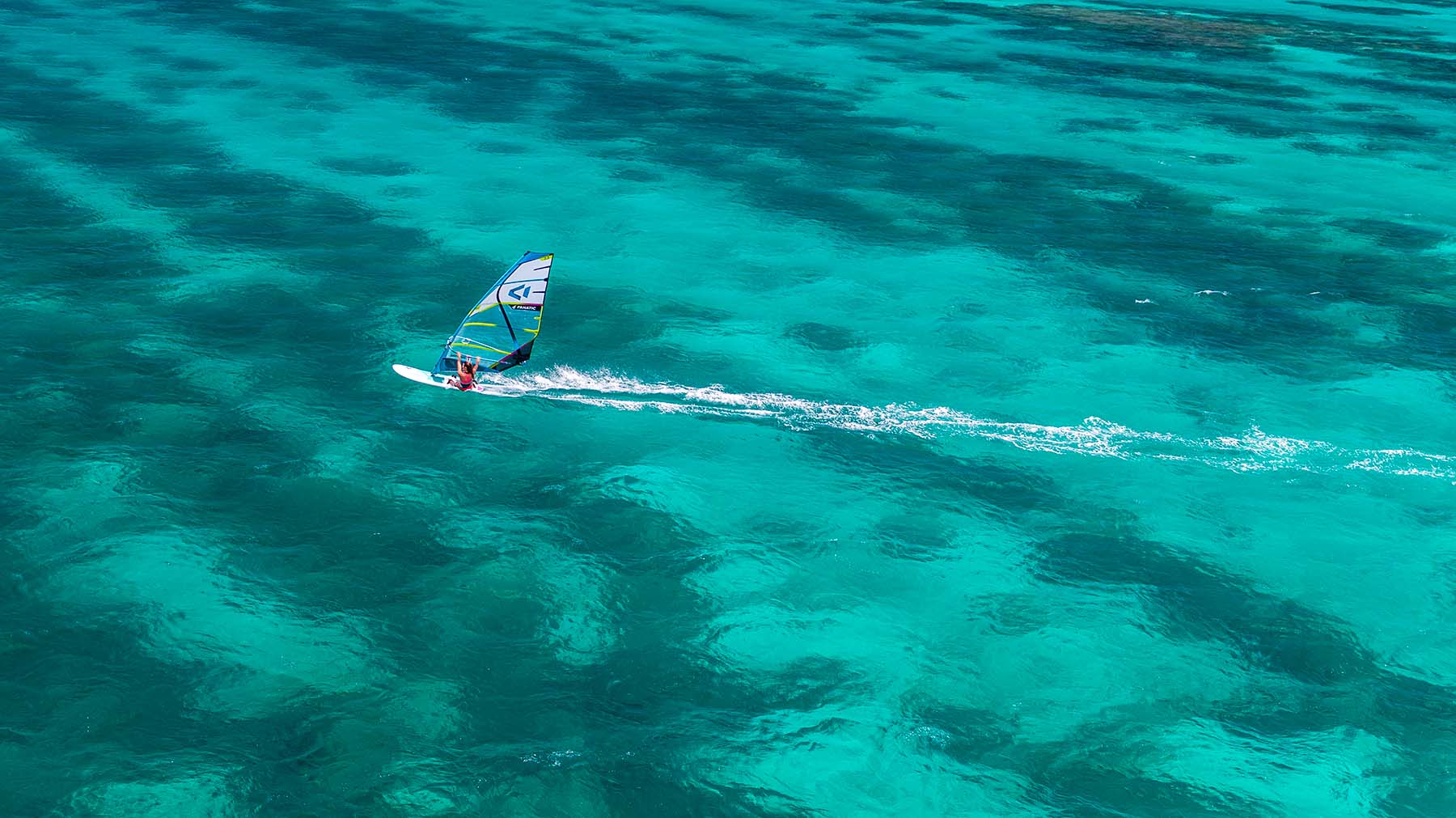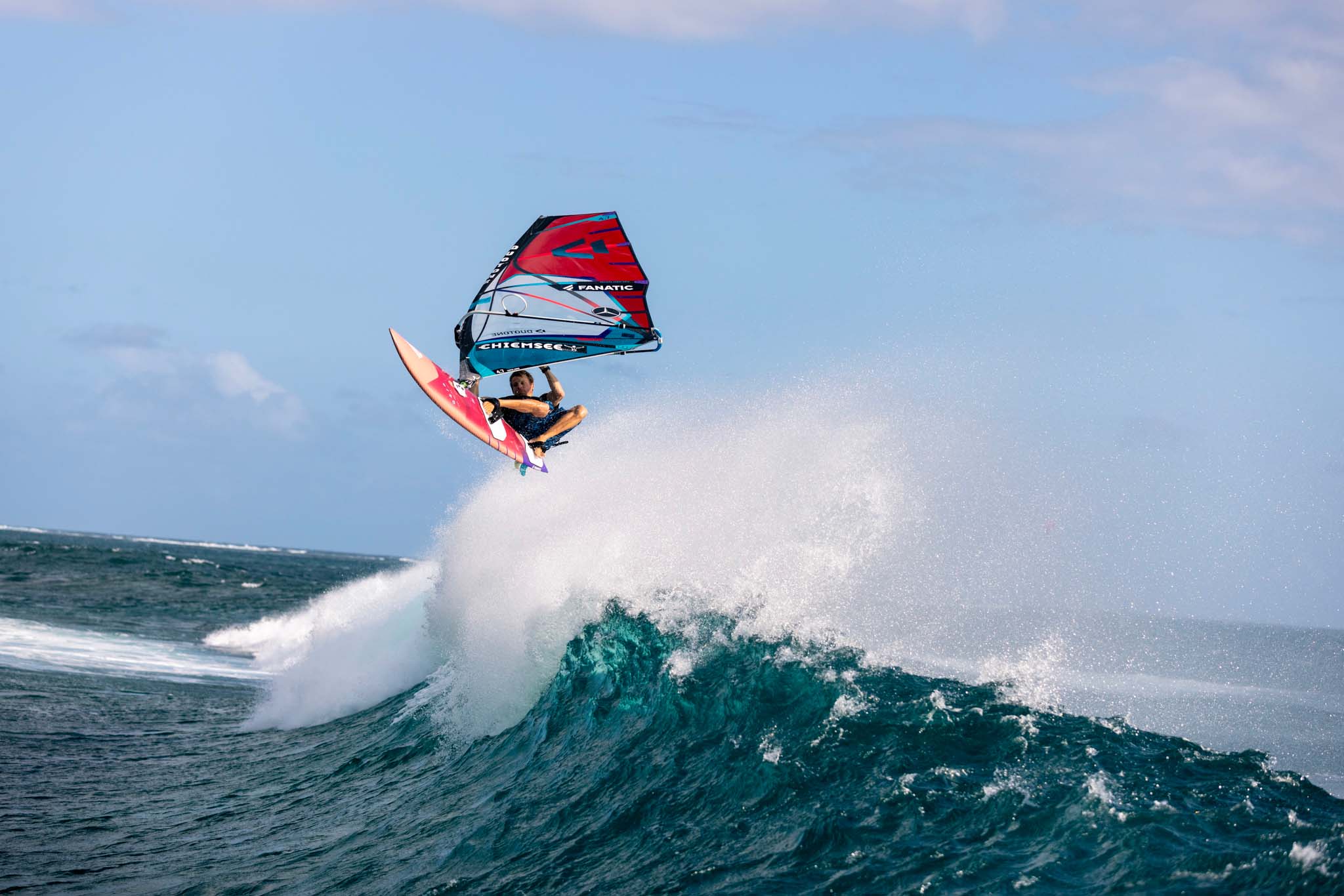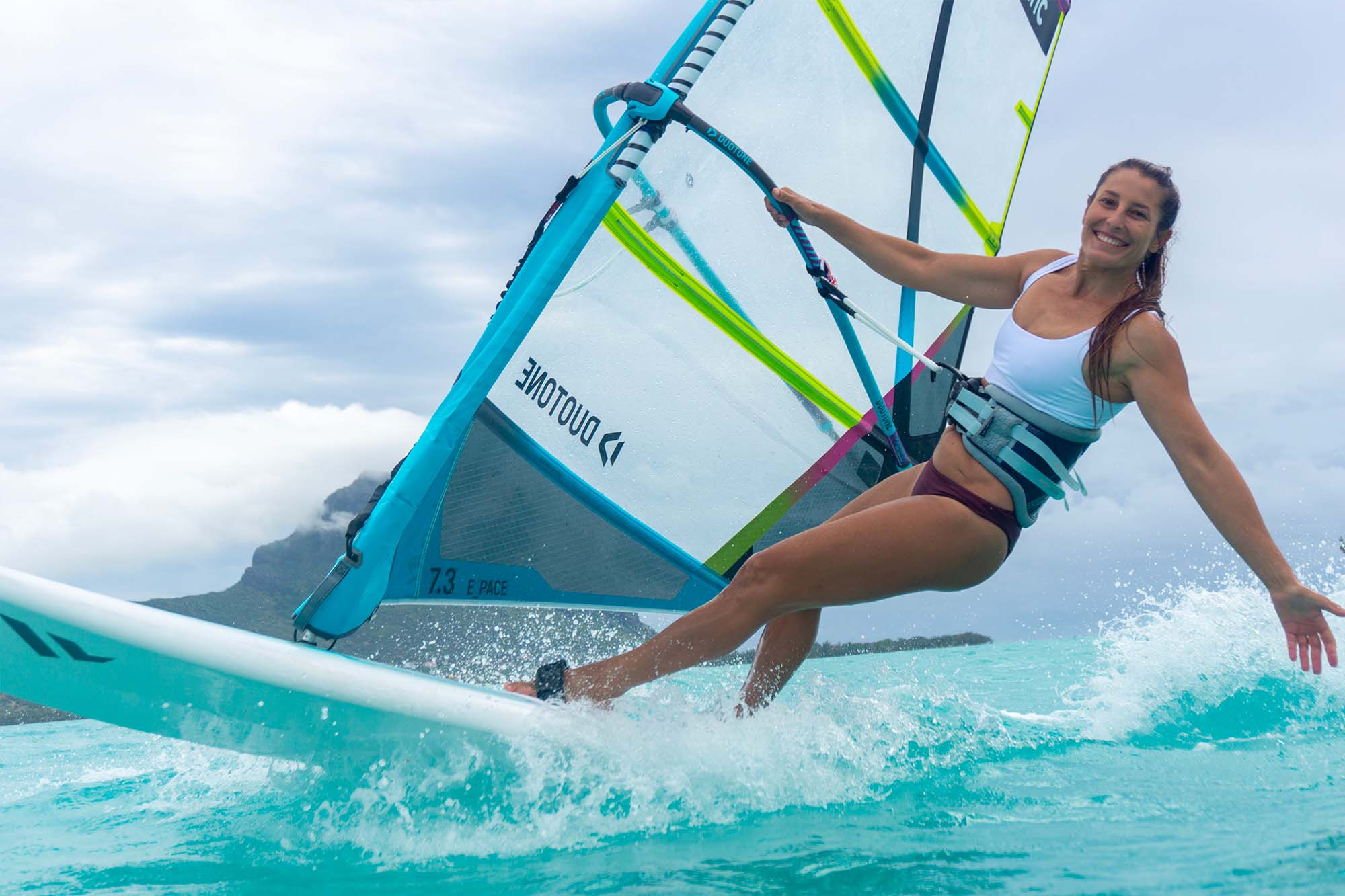The story and origins of windsurfing

Windsurfing for all! This hobby that lots of people are into, this passion that many people have, is a feeling like no other. Pure gliding with you and nature in perfect harmony. Windsurfing has been around for several decades now, and we are not about to get tired of it any time soon!
What is windsurfing?
Windsurfing is basically surfing with the help of the wind, and it is practiced on the water in closed water areas as well as on the sea.
Windsurf equipment consists of a board and a rig (which is divided into a sail, a mast and a boom) and this forms the basis for windsurfing. Not forgetting the wind or course which acts like a kind of engine, but without the noise, making this sport both peaceful and magical! It does however require energy and training to get the best results and to maximize the fun.
Whether on flat water, in choppy water, in the waves or on a foil, windsurfing is as much fun as it is sporty. The variety of possibilities is extensive, from beginner to expert, via freestyle or freeride or even looping four metres above the water. The equipment has evolved at such a speed that it is difficult today to give up on progressing in this ultra enjoyable hobby.
Windsurfing has been around for several decades now, and we are not about to get tired of it any time soon!
What is the origin of windsurfing?
Windsurfing dates back to the 1960s, more precisely in 1964 when Newman Darby, an American who was already a dinghy sailor, installed a sail on a very large rectangular board about three metres long and almost a metre wide.
Unfortunately for him, his invention will never really see the light of day, as it is not easy to sail with this equipment since the sail can only be oriented on the side (neither in front nor behind) and is in the back of the practitioner. In other words, it is difficult to choose your own course.
In 1965, it was Serge Loiselot who took action with his new machine, which he called the sailboard. Completely dismountable, equipped with a flat board, a triangular sail, two masts, one horizontal and the other vertical, and a keel under the board, this was the design of his new toy. Unfortunately for the Frenchman, his invention also flopped.
It was only three years later, in 1968, that two Americans, Jim Drake with the assistance of Hoyle Schweitzer, took a big step forward with the progressive and slow development of our favourite sport which they called windsurfing. The basis being the junction between the board and the sail, the power joint, an essential part of the set up. This small rubber accessory would evolve the sport of windsurfing since it allowed the practitioner to direct his sail and his board wherever required, with the help of the wind.
Then the idea of the boom, the double arch essential to hold the sail and to steer it, quickly came up. The two Americans filed a patent on their invention in March 1968. In the wake of this, they registered the Windsurfer brand name, which is ultra-recognised today and has been making a strong comeback in recent years.

How did windsurfing develop?
It was not until the beginning of the 1970´s that the windsurfing industry started to make itself known in the USA. It was in 1973 that the windsurfer appeared in Europe, in England and Germany, and then in the Netherlands.
In the 1970s, France developed its own boards and rigs, and the number of windsurfers increased steadily to become the country with the most windsurfers in Europe. Well known brands had their moment of glory, such as Dufour, which was inspired by Windsurfer. It was then the recognition of windsurfing in France, a sport fully on the rise.
Gradually, the new sport found its place in the world as the first world championship was held in 1976 with a name well known today, a legend among windsurfers, the Hawaiian Robby Naish.
In 1977 the harness and the footstraps arrived on the market, marking a new positive addition to the sport. These elements allowed the practitioner to sail more securely in stronger winds and to have a better position on his board in order to go faster but also to jump. A huge bonus was that with these additions the rider would not get so tired, therefore maximizing time on the water!
The Rocket Windsurfer brand developed a shorter board with a mast which was further-back, and so the funboard was born.
In 1979, the French brand Bic Sports was created and in two years it became the number one windsurfing brand in the world, with nearly 100,000 boards sold.
In the 1980s, windsurfing championships and cups were held several times a year in Hawaii, California and Europe, first for men and then for women, at both national and international levels. It became such a craze that the riders of the moment themselves became stars! Magazine photos, reports and the cool and fun aspect of the sport made windsurfing a trendy, ultra-playful and accessible sport, mainly in summer.

What is the future of windsurfing?
The number of windsurfers increased strongly in the mid-80’s until the beginning of the 2000’s and then kitesurfing came along, and now wing surfing. Nevertheless, windsurfers are still very much present today, so much so that the brand Windsurfer is making a comeback.
Brands are developing new products such as inflatable windsurfing boards for children in order to get those first steps without getting hurt. The windfoil also appeared a few years ago and the boards and rigs are becoming lighter and easier to access.
Gliding over the water, planing in 35-40 knots, jumping high or performing tricks over the surface, or just simply having fun will help you to forget all of your worries. Yes, windsurfing is a fun sport, it can be said over and over again. With the exception of dinghies and sailboats, it is the basis of all sailing sports with a sail or a kite, and that’s why we love it. It is a timeless sport that keeps you smiling and feeling fantastic!